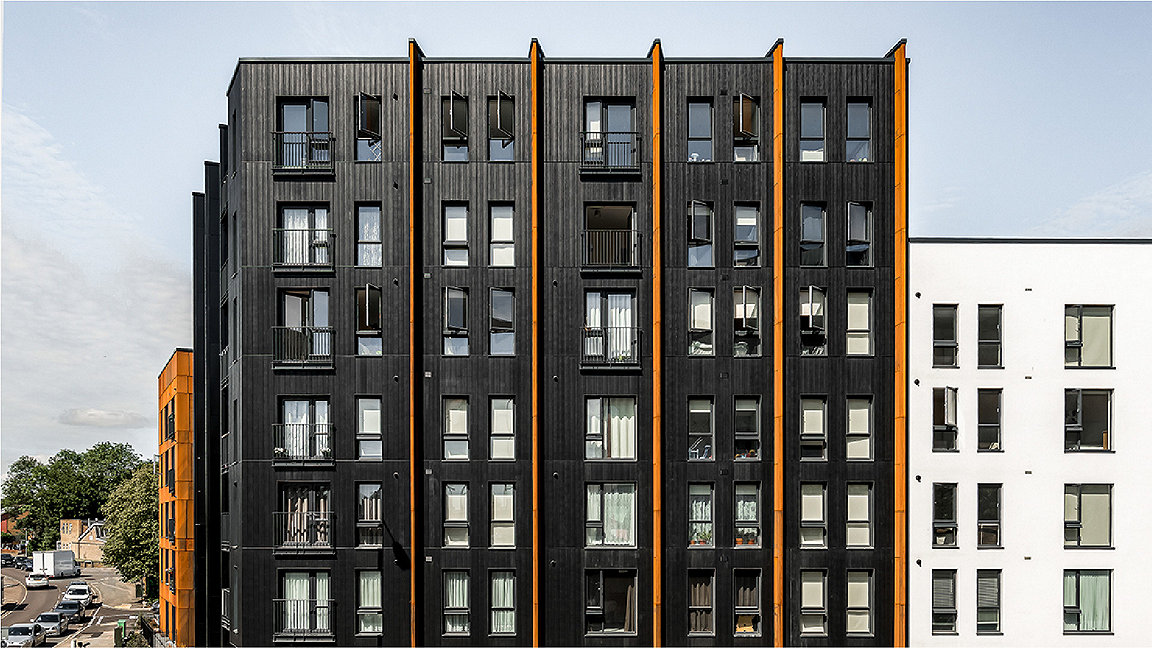
Image RG+P
The term "affordable" is meaningless unless attached to target groups
The scrapping of the housing revenue account (HRA) borrowing cap in 2018 led to speculation of a resurgence in council house building. But many local authorities, fearing that new council homes would immediately be lost to the right to buy, have preferred to direct their efforts at building homes for sale through arm's length companies and joint ventures. They are making a locally important contribution to housing supply, but not always building homes that satisfy the full spectrum of need, or replacing lost council houses. More needs to be done to ensure that Section 106 is delivering the genuinely affordable homes needed, and preventing developers from sidestepping requirements through viability testing.
Also, data on what's being built needs to be clearer. Some housing being delivered is below market cost, but only a small proportion is affordable to groups in the lowest income brackets.
Nick Gallent FRICS is professor of housing and planning at the Bartlett School of Planning, UCL
"Data on what's being built needs to be clearer" Nick Gallent FRICS
The desire to solve the problem is there – the key is increased local engagement
People want affordable homes for their community, but who actually gets allocated this housing often causes tensions. The allocation process prioritises those who are homeless or have emergency needs over local people who might have been on the waiting list for a long time. There is often a perception that affordable housing isn't really "for" local people as a result. The issue of local need has to be addressed; people have to feel that they will benefit, so there needs to be more engagement and more consideration of how housing is allocated.
In rural communities landowners are often interested in affordable housing, but partnering with the right people is difficult. There needs to be outreach that enables better dialogue between landowner, community and development partners – and this should take place at the planning stage, not just looking at exception sites. Councils are well placed to do that, but resourcing is an issue. More funding from central government to enable authorities to be more proactive would be very helpful.
Hana Loftus is co-director of HAT Projects and special projects officer at the Greater Cambridge Shared Planning Service
"There is often a perception that affordable housing isn't really for 'local people'" Hana Loftus
Three issues need confronting if we are to address the problem
There are three main areas in relation to affordable housing: land, grant and cross- subsidy. Regarding land, there are policies such as the Mayor of London's, who wants 35% affordable housing on privately owned land, but 50% on public sector land. More could be done by parcelling chunks of land and providing it at low cost to allow developers to reach a higher proportion.
Grant is perhaps simplest; it is literally providing money for delivery of affordable homes, and historically it has been the most affordable way to increase delivery. Local authority borrowing restrictions have been lifted, so government could stipulate that a proportion of that borrowing is ring-fenced for increased affordable housing delivery – or the government could simply pay for it.
There is also cross-subsidy – the model for the last 20 or more years. One method would be encouraging the private sector into the affordable housing sphere. It is already happening: Legal & General has an affordable housing subsidiary, as do others. It provides a stable return, and hits environmental, social and governance targets.
Nick Whitton is Director of research at JLL
Housing associations need long-term certainty over grant funding availability
Knowing what is available for affordable housing would help housing associations move from a delivery programme focused on section 106 agreements to their own land-led delivery programmes. They would be more in control of what is developed and less reliant on what is delivered through the planning process. They could take a long- term view and deliver the housing needed.
Many housing associations want to be more active in the land market and control more of their own delivery programmes. In our latest survey, 46% wanted to acquire strategic land for long-term development pipelines. Currently, you have grant funding, but also housing associations cross- subsidising affordable housing by building homes for sale. A lot of that is focused in London and the south-east, where the market has slowed, so that model is at risk. You need to get away from political cycles, which needs cross-party consensus. Obviously, that is a big ask.
Emily Williams is associate director of residential research at Savills
